Hyundai IONIQ 5 review and buyer’s guide
The Hyundai Ioniq 5 makes a bold retro-themed statement on styling, it’s fast and the cabin is luxurious. But how does it compare with the rest of the busy ‘family EV’ segment and does it justify an $80K price tag?
The Hyundai Ioniq 5 is a compelling luxury electric vehicle that makes a typical family SUV look old in terms of both its styling and its performance.
But there are so many electric vehicles on sale at a similar price point you’re going to struggle test driving them all, from the MG4 to the Tesla Model 3, or the BYD Sealion 7 to the Kia EV5.
This report aims to give you a balanced and fair assessment of both the good and bas aspects of the Ioniq 5 so that you can make an informed choice.
If you’re want more information about buying an EV, click here> or if you want the official Hyundai Ioniq 5 press kit, click here >
Driving the Hyundai Ioniq 5 is going to make you seriously doubt the need to go back to a petrol SUV, especially if you’re not a car enthusiast. If you’re kind of passively ‘into’ cars because you see them as a necessary part of daily life, then an Ioniq 5 might be the straw that breaks combustion’s back in your familial transport equation.
It’s unbelivably quiet to anybody who’s never driven a hybrid or EV before, but it’s also quite an impressively high-quality product if you’ve tried a bunch of different EVs, or hybrids at some point in the past. In fact, there are several aspects to the Ioniq 5 that should make you seriously question anything else, especially from the Chinese brands as they rally to get their build quality up to the same standard.
Having said that, the likes of Chery, MG and GWM/Haval are close on the fit-and-finish of their EVs and hybrids, but they have yet to eclipse the likes of Hyundai and Kia.
The first tangible difference you’ll notice about sliding into the Ioniq 5 is how much sound and vibration is attenuated throughout the cabin, and then you’ll notice the size - or the proportions, more like it.
Some may find the exterior a bit quirky, but when you look at it from afar it suggests ‘small hatch’ to your brain. That’s until you walk up to it and realise the wheelbase is longer than a LandCruiser. It really is disconcerting when you get up close because it's fairly big (compared to actual small hatchbacks), but the proportions are more compact hatch-like. There’s a hint of TARDIS.
There are three model grades, the base model being just called Ioniq 5 (they couldn’t come up with anything more creative, apparently). Then there’s the ‘Dynamiq’ for the mid-level model, and the ‘Epiq’ which is the flagship of the range. Epiq can have a box ticked that gives you digital door mirrors that uses a camera-minitor system instead of conventional reflective mirrors.
You also get three powertrains, either the:
77kWh battery with 239kW dual electric motor (AWD only);
84kWh battery with 168kW single-motor combination (RWD only); or
63kWh battery with 125kW single-motor (RWD only)
Hyundai offers the slightly upgraded battery out of the Kia EV6 in the Ioniq 5 Dynamiq and Epiq variants, because they run on the same platform under HMG (Hyundai Motor Group). But you can’t have the Dynamiq with the base model’s 63kW batt./125kW motor combination, it’s the poverty pack and it’s staying that way.
The entire Ioniq 5 range gets a high efficiency heat pump system, and battery conditioning, which should be of interest if you’re into the technical side of an EV,.
The heat pump is important because in a combustion car you've got ridiculous amounts like heat wastage, something like 50 percent - ballpark. Heating in a cold environment is such an energy intensive process and this is a real problem with electric vehicles, inherently. So a high efficiency heat pump thing is a big deal.
The base model gets big 19-inch alloy wheels and at a minimum they claim about 440km of range in standard powertrain configuration (the 125kW motor/RWD). Or the claim is 570km with the ‘extended range’, which means the bigger powertrain with the bigger 168kW motor (still RWD). So ‘extended range’ just means: bigger battery, bigger motor, but rear-drive only. (Where they say ‘extended range’ on the Dynamiq AWD, it’s not really; it’s less than the base model RWD).
Whereas the AWD option gives you dual motors (one front, one rear), the EV6’s 77kWh battery and about 500km of range, they claim.
As for size, the Ioniq 5 is a curious design exercise, as touched on earlier. It’s 4655mm long, 1890mm wide and 1605mm high, which makes it proportionally about the same size as a Toyota RAV4. In fact, it’s 55mm longer and 45mm wider than a RAV4, and the wheelbase is exactly 3 metres long, making it 10mm longer than the most popular medium SUV in Australia.
But offering 160mm of ground clearance puts the undercarriage 30mm closer to the road. So it’s naturally heavier low-down in the centre of gravity stakes, but has a wider, longer footprint and is inherently going to handle better than any medium SUV you’ve ever driven.
The wheelbase of Ioniq 5 being 3 metres long, which is just 9cm shorter than the Kia Carnival, means you can’t get a 3-person couch in like you can a Kia Carnival, but legroom is abundant, and parking is even easier because it’s only 4.6 metres long, or about the same as a Toyota RAV4, as mentioned.
FEATURES & PRICING
Ioniq 5 base model | $75,300 (driveaway, approx.) | 63kWh batt. + 125kW single-motor (RWD)
Ioniq 5 base model | $81,600 (driveaway, approx.) | 84kWh batt. + 168kW single-motor (Extnd. Rng, RWD)
includes:
19-inch alloys (w/ tyre repair kit)
LED headlights, taillights, daytime running lamps, foglights
Acoustic laminated windscreen, front & rear side glass
Rain sensing auto wipers
Wool/leather combination seat upholstery
leather steering wheel
10-way electrically adjustable driver’s seat
12.3-inch digital driver’s display
12.3-inch infotainment touchscreen
Satnav
6-speaker stereo
Wireless phone charging
Proxy smartkey w/ push-button start-up
Over-the-Air software updates
Adaptive cruise control
Blind-Spot Collision-Avoidance Assist, Lane Following Assist, Lane Keeping Assist, Safe Exit Assist, Forward Collision-Avoidance Assist 2, Rear Occupant Warning, Rear Cross-Traffic Collision-Avoidance Assist, Parking Collision-Avoidance Assist, Blind-Spot View Monitor, Driver Attention Warning, Remote Smart Parking Assist,
360-degree camera system
Dynamiq | $86,800 (driveaway, approx.) | 84kWh batt. + 168kW single-motor (RWD)
Dynamiq | $91,500 (driveaway, approx.) | 77kWh batt. + 239kW dual-motor (AWD)
adds:
20-inch alloy wheels (w/ tyre repair kit)
Smart electric tailgate
Rear privacy glass
‘Eco-processed’ (partial) leather seats
Heated front seats
10-way electrically adjustable front passenger seat
Sliding centre console
Head-up display
8-speak Bose premium sound system
Epiq | $90,450 (driveaway, approx.) | 84kWh batt. + 168kW single-motor (RWD)
Epiq | $95,100 (driveaway, approx.) | 77kWh batt. + 239kW dual-motor (AWD)
adds:
Panoramic glass roof (fixed) w/ electric sunshade
Intelligent front lighting system
Fully reclining front seats (‘Relaxation Mode’)
Rear retractable windowshades
Heated and ventilated (cooled) front seats
Heated rear seats, heated steering wheel
Digital side mirrors (when optioned)
INTERIOR
The Ioniq 5’s interior is roomy, comfortable and filled with light thanks mostly to the extensive use of light greys and off-whites in material colour, but it’s not all lighter tones where it would make absolutely no sense having them.
The dashboard is a dulled dark grey that doesn’t bounce any reflections off into your face and the dark footwells make sense from a cleanliness point of view.
Given that this vehicle was conceived in Hyundai’s previous generation of design, you can see the difference in styling cues with things like the dual touchscreens having those rounded corners and more silvery buttons on the dash - which is actually a nice thing to see as carmakers carefully try to walk back from their mission to eliminate buttons (without ever admitting it was a terrible idea).
Fortunately the Ioniq 5 does actually retain some more convention operability (especially if you make sure never to tick that box for the digital door mirrors which are awkward and weird and increase complexity/reduce reliability where it need not be.
The glass roof is the full panoramic kind, stretching right to the back of the second row, and depending on where you live, the shade screen might not cut it for keeping the malenoma at bay. It’s just a shame you can’t have the Epiq without it, because it would be nice to have those cooled seats on hot days. Fortunately, the air-con is very efficient at quickly bringing the cabin temperature down.
The cockpit arrangement of cupholders, where your phone is cradled (and wirelessly charged) or some other tablet etc is plugged in to charge is all done quite cleverly in a way that offers easy access as well as distraction-free stowage. This is thanks to the two different styles of centre console depending on which variant you pick.
The Dynamiq gets the sliding centre console whereas the base model gets the fixed console, but still with the lifting lid.
You’ll find seat ehating/cooling buttons, USB ports, the wireless charging pad, cupholders (that are always an appropriate depth in Hyundai/Kia porducts, by the way) and storage for bits and bobs in this central console stack.
Door bins are reasonably generous without being particularly big, and there’s a useful little storage hole in the front down on the floor where there is typically a transmission tunnel with plastic panelling stopping you from putting anything width-ways along the floor.
Now, you can do this in the Ioniq 5, although unlike in those conventional interiors where driver and front-passenger footwells are separate, something could potentially roll from the left footwell into the driver’s pedal box, so watch for that when stowing items in the passenger footwell.
The dashboard and touchscreen layout is typically Hyundai/Kia, meaning within easy reach of most butons and icons, although you do need to still get into the vehicle’s ‘setup’ and ‘driver assistance’ sub-menus to turn off the incessant speed limit tone that goes off every single time you go even 1km/h over the designated limit.
On the steering wheel is the lane-keeping button which you can hold for 3 seconds to disable this feature and stop it tugging on the wheel every time you even think about moving in your lane (which is actually allowed, by the way).
Once you’ve got those two primary features disabled (they will reactivate next time you start the vehicle), but at least for now the Ioniq 5 is going to be a joy to carve through suburbia. There’s good vision out of all windows and via the rearview mirror.
The steering wheel is absolutely Goldilocks in terms of weighty feel but lightness to manouvre, while also being the ideal thickness to hold for a range of hand sizes and finger lengths. And the only real noise you’re going to hear as you zip through streets is the faint whispers of wind channelling around the door mirrors.
If you’re new to Hyundai prodcuts from the last five years or so, you might find the transmission stalk behind the steering wheel a bit of an ergonomic challenge at first. To some it’s not naturally the most logical thing to twist the end of the stalk thumb-forward for ‘Drive’ and thumb-backwards for ‘Reverse’ - it will probably take some adaptation - but once you’ve got it, it can be quite slick.
Sure, it does keep your left hand on the steering wheel, although 90 per cent of the population is right-handed so it’s not a specific victory for human-centric design.
Unbfortunately, the US-first nature of car design these days means many of these design choices remain annoyingly present in lots of Hyundai products, as well as in many other brands.
Things like the audio controls for volume are mounted on the right-hand side of the steering wheel, while the cruise control operations (like setting cruise speed, adjusting it, and adjusting the radar cruise distance inciments) are on the left-hand side of the steering wheel. But at least the wipers and indicators are in the ‘normal’ positions on stalks behind the wheel at 9 and 3.
You might also find that in Australia, having gloss black steering wheel controls a bit irritating in terms of glare. The backlighting on some of Hyundai’s buttons in the past has been insufficient to combat the intensity of the ambient sunlight, especially in the late afternoons.
But it just depends on you and what you find acceptable or not. For most people it’s probably not going to be a problem. And there are benefits such as the ability to clean a flat gloss surface is much easier than buttons.
Having said that, this is actually one of Hyundai’s more restrained interiors from their (often) insatiable appetite for covering everything in gloss black. So to see lots of other textures and colours and ideas is a welcome change.
I'll help you save thousands on a Hyundai Ioniq 5
Just fill in this form.
No more car dealership rip-offs.
Greater transparency.
Less stress.
SAFETY
The Ioniq 5 is a very modern, safe vehicle and even thought it was tested in 2021 by EuroNCAP to earn a 5-star rating by ANCAP, it remains a Top Safety Pick+ in the US from the Insurance Institute for Highway Safety (IIHS).
If you want to download the full Ioniq 5 technical report from ANCAP, click here > and you can check out the crach testing results from the IIHS by clicking here >
Ioniq 5 scores very well in all the important destructive crash tests, from both agencies, and scores particularly well in the small overlap test conducted by the IIHS. You can watch the video here:
The IIHS report says that the driver’s footwell. the vehicles safety cell (cage) worked appropriately to protect occupants and that the front and curtain airbags deployed correctly to:
keep the head from coming close to any stiff structure or outside objects that could cause injury.
…the driver's survival space was maintained reasonably well… [and] risk of injuries to the dummy's legs and feet was low.
It was a similar story in the ‘moderate overlap’ test where the vehicle hits at a 40 per cent overlap with the immovable barrier at 64km/h whereby the IIHS says Ioniq 5’s:
shoulder belt remained in an ideal position on the dummy’s chest.
and that data recording by the dummy indicates:
a low risk of injury to the head or neck and chest… The rear passenger dummy's head remained a safe distance from the front seatback… [and the] rear passenger dummy's lap belt remained in the ideal position on the pelvis.
You can watch the video here:
Key safety aspects to the Ioniq 5 include the front-centre airbag which prevents front occupants colliding heads during a crash, plus the inherent safety built into this platform itself.
What that means is that a particularly heavy Ioniq 5 at roughly 2100kg is singifcantly more safe than the equivalent medium SUV weighing 500kg less but being roughly the same size - this is due to their respective mass. It’s the mass that makes a RAV4 hitting an Ioniq 5 a worse result for the Toyota, hypothetically, because the 2100kg Ioniq5’s mass pushes back against the RAV4 much harder, therefore it does more damage.
You can see this inherent mass-related safety aspect play out in the mobile deformable barrier crash tests where the Ioniq 5 repells the 1400kg sled with a lot more kinetic energy than the sled does to the Ioniq 5.
Other notable aspects to the Ioniq 5’s testing results include very good scores in the collision avoidance domain. This includes all pedestrian detection scenarios, cyclist avoidance, car-to-car auto emergency braking and junction crossing.
ENGINE
Hyundai Australia says all models receive this bigger 77.4 kilowatt-hour battery, which is freaking huge when you think about it - it’s a massive battery.
The driving range is increased to about 500km (from the original Ioniq 5 that debuted back in 2022) both in the rear-wheel drive and the all-wheel drive powertrains.
The rear-wheel drive variants use an AC electric motor that makes 160kW, whereas the all-wheel drive versions use a 155kW rear motor and a 70kW front axle-mounted motor to aggressively throw you into the distance.
The rear-drive version is going to be preferable for those who want maximum potential range, while AWD is going to favour those who prefer a backroad blast from time to time while not being overly concerned about pushing the envelope of range required for your weekly running around.
Hyundai says the 225kW AWD Ioniq 5 can make the 0-100km/h sprint from a standing start in 5.2 seconds - and it’s pretty close in most reviews out there using proper timing equipment.
The 653-volt, 72.6kWh lithium-ion polymer battery mounted beneath the floorpan is capable of taking both 400V (AKA 50kW) and 800V (AKA 350kW) charging infrastructure, but good luck finding such high capacity charging stations A) in working condition, B) unoccupied by other EVs, or C) located in an area that is convenient.
If you’re completely new to EVs, 350kW chargers are rarely located anywhere other than major highway driving aterial roads, and because of their infrequency of use, can often be out of order for long periods of time - and the more remote, the longer it takes (and at higher cost) to repair them - so be rpepared to do some homework before heading out for the Big Lap.
It’s also important to know that the faster you recharge a battery - any battery - the harsher it is on the internal battery chemisty to remain viable - long term, it must be stressed. Obviously, a battery like the one in an Ioniq 5 is going to last you a very long time (and has an 8-year warranty, by the way).
In order to take 350kW of DC charging capacity, the Ioniq 5 uses the inverter onboard and the electric motor to convert the DC charge coming in to AC for the motors. The multi-charging system boosts 400V to 800V for stable charging compatibility.
Hyundai reckons a DC fast charging station can replenish the battery from 10 percent to 80 percent in 18 minutes, and that a five-minute plug-in can provide 100km of range.
When connected to a 50kW fast charging station, IONIQ 5 takes 57min (2WD) or 62min minutes (AWD) to recharge - that’s a lunch break on a road trip.
DRIVING
Punting the Iioniq 5 through the hilly backroads is almost as much fun as the i30 N Performance, only you’re in this cone of silence where the speed feels like it’ll keep building and building - even if you let off.
Eventually, when you do ease off and coast, you’ll feel the regenerative braking system pouring some of that kinetic energy back into the battery. Of course you can adjust the severity of the regen braking to increase the resistence and slow quicker (putting a greater boost of energy back into the battery), or decrease the severity in order to make it a longer, gentler regen and deceleration experience.
What you start doing is trying to find the sweet spot based on the area you live in and the general traffic environment. If you live in a very mountainous area with steep hills, you’ll probbaly get the most out of the more severe regen setting.
Whereas if you live in an area with longer, continuous slopes with further stretches of road between sets of lights, the gentler regen setting might be better suited to get longer, lower-intensity energy recouperation which means you can also sustain some kind of speed to continue flowing with traffic.
As for general motoring about, the Ioniq 5 is a blast, making the whole school dop-off/pick-up routine very comfortable, even over the coarse, crackling road surfaces that you’ll find in most suburban areas.
The 2023-onwards version received a suspension upgrade to make it more compliant over undulating sine-wave type surfaces where the vehicle would bump and rebound with noticeable ‘enthusiasm’ on the original version. This wasn’t some undercooked engineering botch job, it was just a slightly softer tune on the initial models that arrived, better suited to American roads.
Having the enormous 400-odd kilogram battery bolted so low-down in the chassis makes for a very flat ride. But what you might not know about this skateboard-type feel is that having such a large, heavy mass so low in the vehicle’s frame can incur some unique rolling phenomena. However, this is if you push the limits in the corners on a racetrack - which you’re never going to do, most likely, so don’t scrub Ioniq 5 off your list - just be aware that there is always an engineering flip-side to every coin.
Overall, the Ioniq 5 feels flat in the corners, fast on the way out and feels confident on the brakes. But the steering is also quite light, which makes it excellent for navigating tight city corners and agile for making cheeky 3-point turns in front of the school crossing lady.
And thanks to the vast wheelbase that rivals a Kia Carnival or Santa Fe, you’ve got acres of legroom for even the tallest of families.
FUNCTIONALITY
With the rear seats deployed in the standard 5-seat layout, you get a medium SUV beating 745 litres of luggage space. This is largely thanks to that quirk to its proportions that makes it functionally more like an upsized medium SUV.
Thing is, most medium SUVs are chockablock at about 500 litres - roughly. But the Ioniq 5 has another 250-odd litres to go.
With the second row of seats collapsed you get 1655 litres and any long or awkward things you might need to stow at some point should fit nicely along the floor which jutts out a fair way beyond where the tailgate glass slopes rearward. It’s almost like a hatchback in that sense, or maybe a sportback even.
It’s easy to think at first glance that the Ioniq 5 is absolutely useless when it comes to anything in the realm of towing. But eu contraire, you can actually have a towbar fitted, put 100kg of towball download on it and pull up to 1600kg of braked trailer.
Although, don’t be expecting the normal range to be achieveable while you ‘re pulling a trailer behind you, but at least you can still do moderately functional things with your EV. There is usually every possible genuine accessory for most cars but on this occasion there aren’t even any roof racks to go with your Ioniq 5, so the trailer+towbar might be a good idea.
DRAWBACKS
Probably the Ioniq 5’s biggest drawback is that it’s pretty expensive in 2025 against a field of similarly sized, relatively well equipped and fairly well-built Chinese elecric vehicles.
What those rivals lack, however, is long-term brand support and reliability, nay robustness, proven over a long period of time. Ioniq 5 feels like a small tank in many respects as far as build quality goes. It feels solid, the cabin feels cocooning but every switch, every touchscreen, every door panel feels chunky - like it’ll last more than a few summers sitting in the driveway.
The other problem with the Ioniq 5 is its lack of spare tyre. Even a space-saver is better for getting your family mobile again on some outer-suburb backroad in the 35-degree heat. But the pack of compressed goop you’re given under the boot floor is going to have to suffice to get you to the nearest tyre shop; difficult to do on a Sunday afternoon with work on Monday morning.
You should also keep a tyre repair kit in your Ioniq 5 and learn how to use it in the event you get a puncture on the treadface of the tyre. Otherwise, just pray you don’t get a hole in the sidewall, because even then the compressed goop won’t work and you’ll be calling a tow truck.
Not being able to fit roof racks is a missed opportunity not just for Hyundai to sell you some genuine accessories but also for you who might want to take skis to the snow, your bike to the local track or fit some kind of luggage pod for those longer holiday journeys typically encouraged by carmakers to EV buyers.
Obviously there are workarounds here, and clearly the best one is to actually have that towbar fitted and get a tow hitch mounted bike rack.
As for the rest of the Ioniq 5, it’s very hard to fault it without becoming extremely nit-picky to the point of not offering much benefit to you.
MAIN COMPETITORS
MG4 (Excite) | $41,200 approx. driveaway (RWD)
Power-weight ratio: 74 kW/tonne | Power: 125 kW | Kerb weight: 1672kg
Luggage cap.: 363L (rear), 58L (front) | Wheelbase: 2705mm
Towing capacity: 500kg (braked) | Turning circle: 10.6m
Warranty: 7 years (standard), 10yrs/250,000km (dealer serviced, includes traction battery)
Years on sale: 1 year (current model launched 2025)
KIA EV6 (Air) | $78,600 approx. driveaway (RWD)
Power-weight ratio: 84 kW/tonne | Power: 168 kW | Kerb weight: 2000kg
Luggage cap.: 490L (rear) | Wheelbase: 2900mm
Towing capacity: 1600kg (braked) | Turning circle: 11.6m
Warranty: 7 years/unlimited km (vehicle), 8 years/160,000km (traction battery)
Years on sale: 3 years (launched 2023)
BYD SEALION 7 (Premium) | $58,200 approx. driveaway (RWD)
Power-weight ratio: 103 kW/tonne | Power: 230 kW | Kerb weight: 2225kg
Luggage cap.: 500L (rear), 58L (front) | Wheelbase: 2930mm
Towing capacity: 750kg (RWD, braked), 1500kg (AWD, braked) | Turning circle: unknown
Warranty: 6 years/150,000km (vehicle), 8 years/160,000km (traction battery)
Years on sale: 1 year (launched 2025)
Hyundai Ioniq 5 | $75,300 approx. driveaway (RWD)
Power-weight ratio: 65 kW/tonne | Power: 125 kW | Kerb weight: 1910kg
Luggage cap.: 527L (rear), 58L (front) | Wheelbase: 3000mm
Towing capacity: 1600kg (braked) | Turning circle: 11.9m
Warranty: 7 years/unlimited km (vehicle), 8 years/160,000km (traction battery)
Years on sale: 4 years (launched 2022)
CONCLUSION
The Hyundai Ioniq 5 is one of the most polished EVs on the market and certainly it has longevity in the market given that it’s been on sale since the early 2020s.
Not only does it offer SUV-like comforts and spaciousness, it’s also got a performance option if you have the money to spend on the likes of the Ioniq 5 N, which is completely unhinged.
Otherwise, Ioniq 5 is quiet, civilised and feels like it’s been built with attention to detail and robustness to burn. If you want an electric vehicle that is going to be durable, practical and which offers some sporty driving characteristics without being some off-the-chain psycho.
Admittedly it is more expensive than some of the newer Chinese rivals, but this is one of those occasions where you do actually get what you pay for, and what you’re paying for is one of the best-executed EVs on the market.


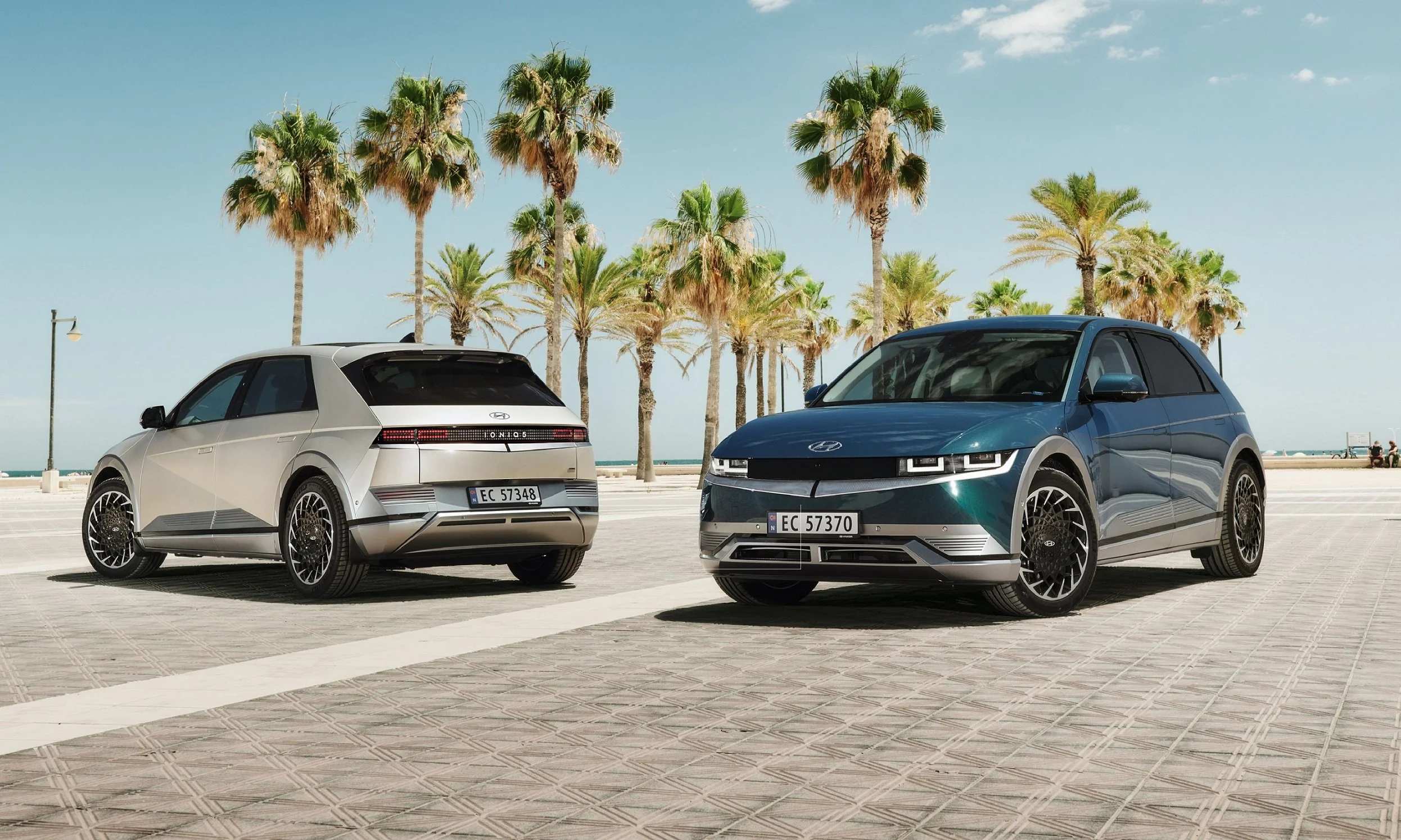

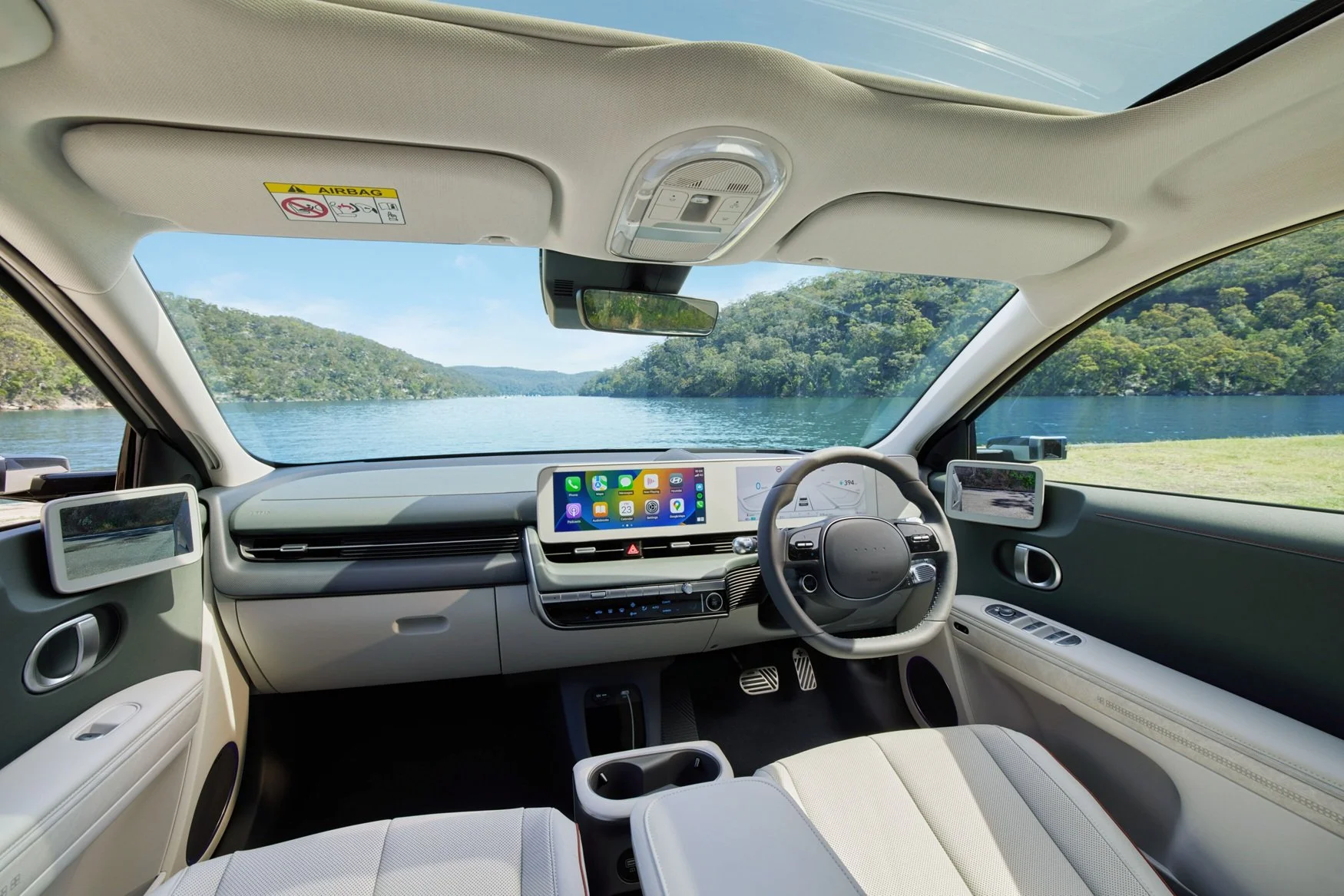




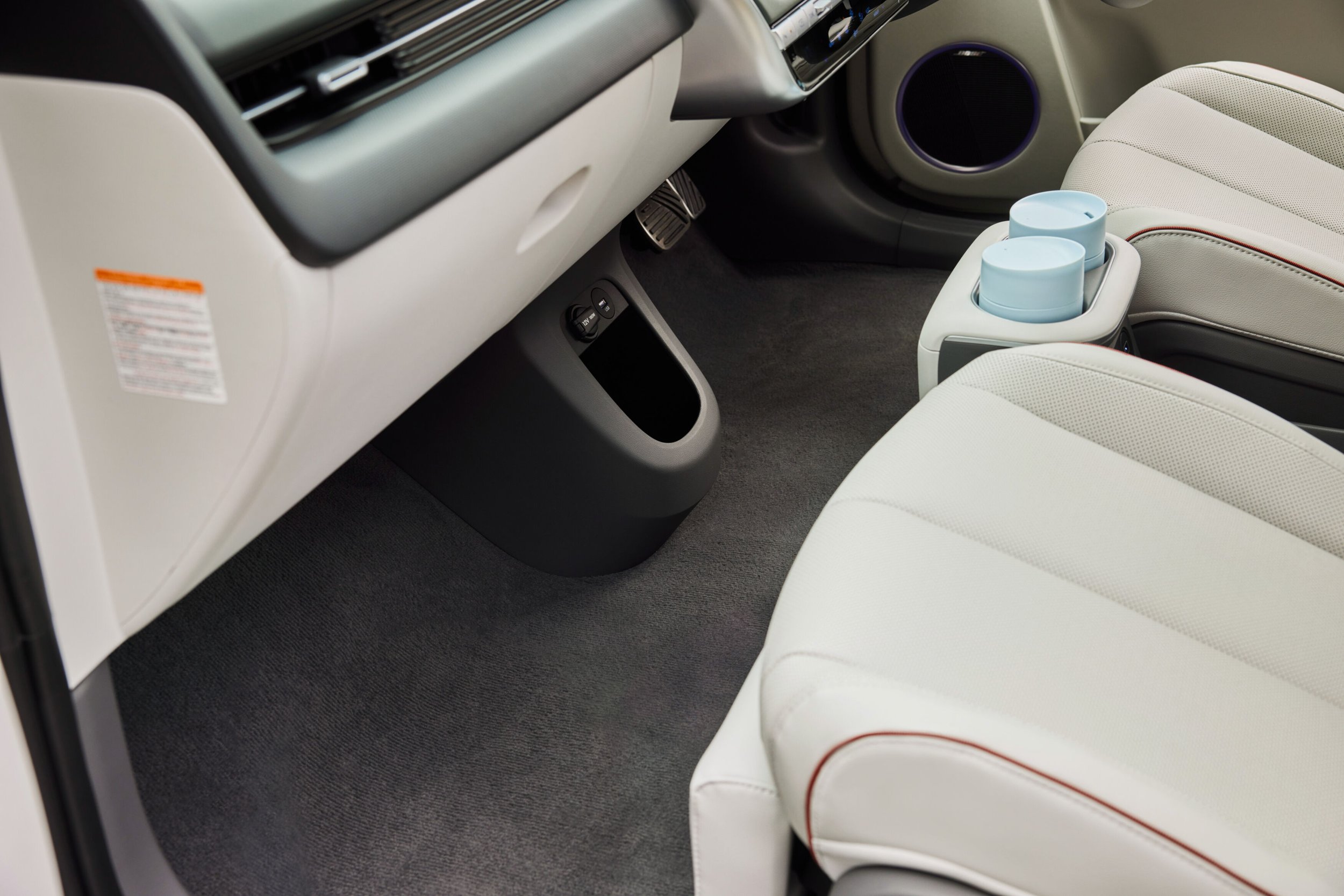











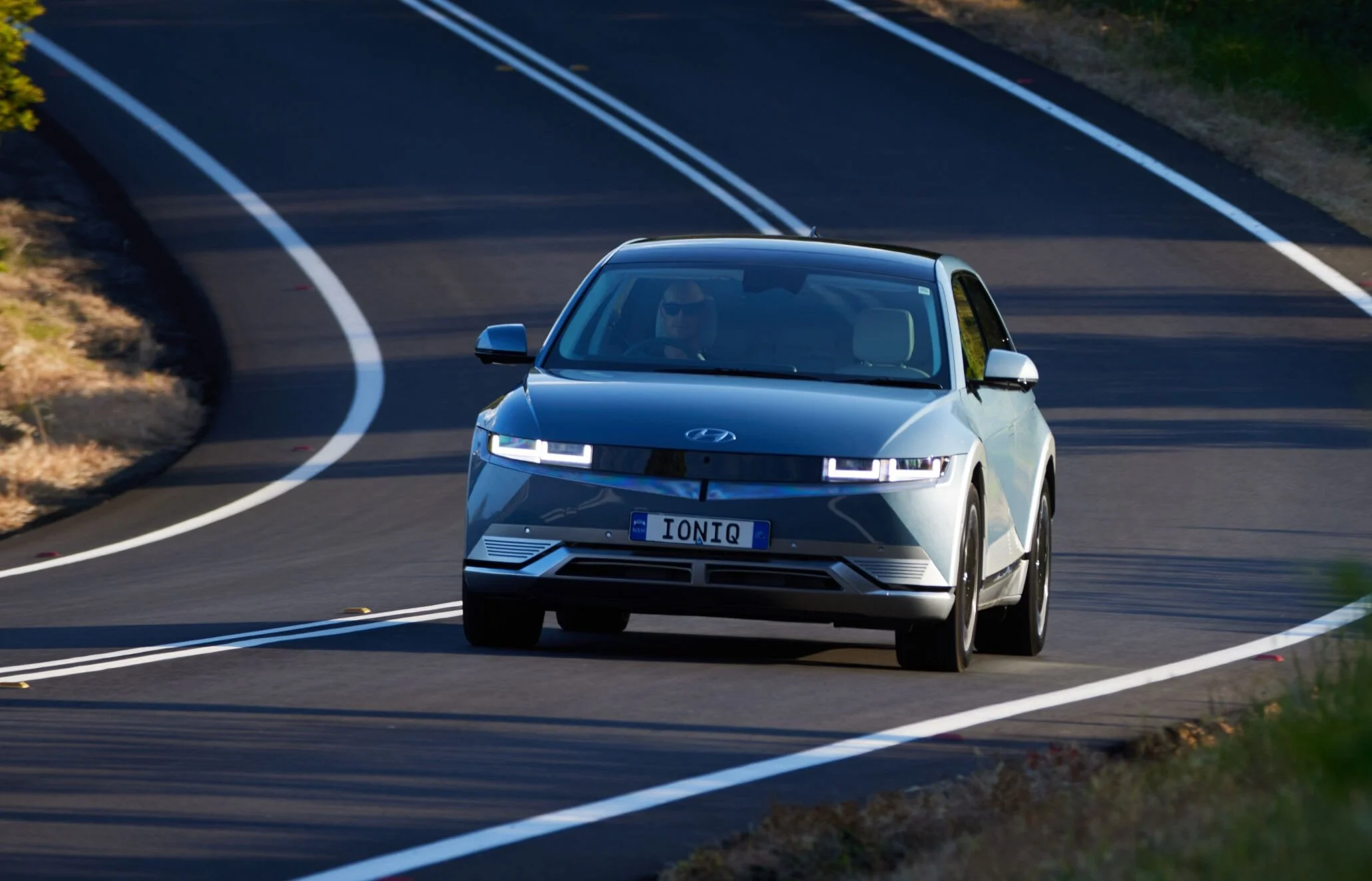
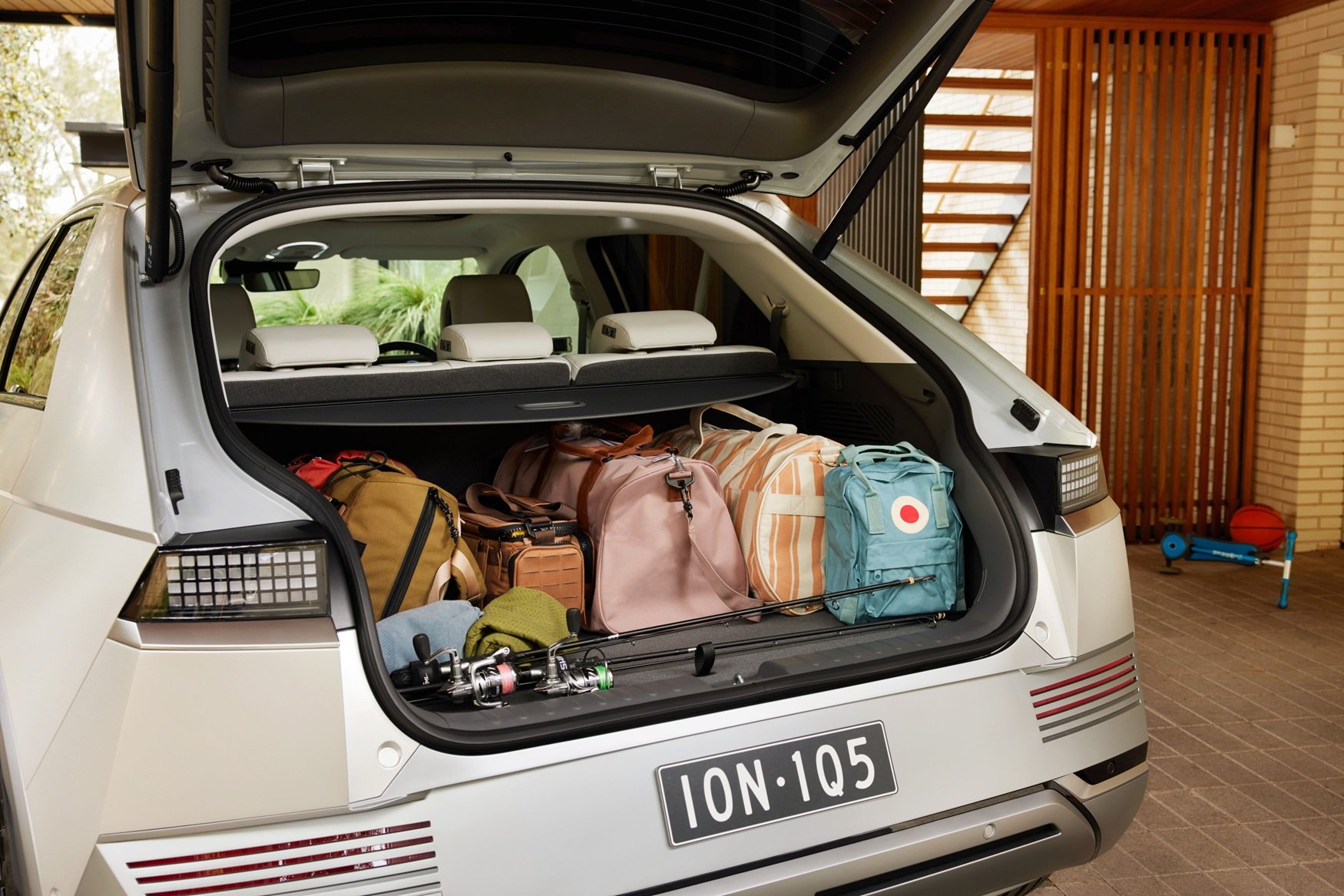






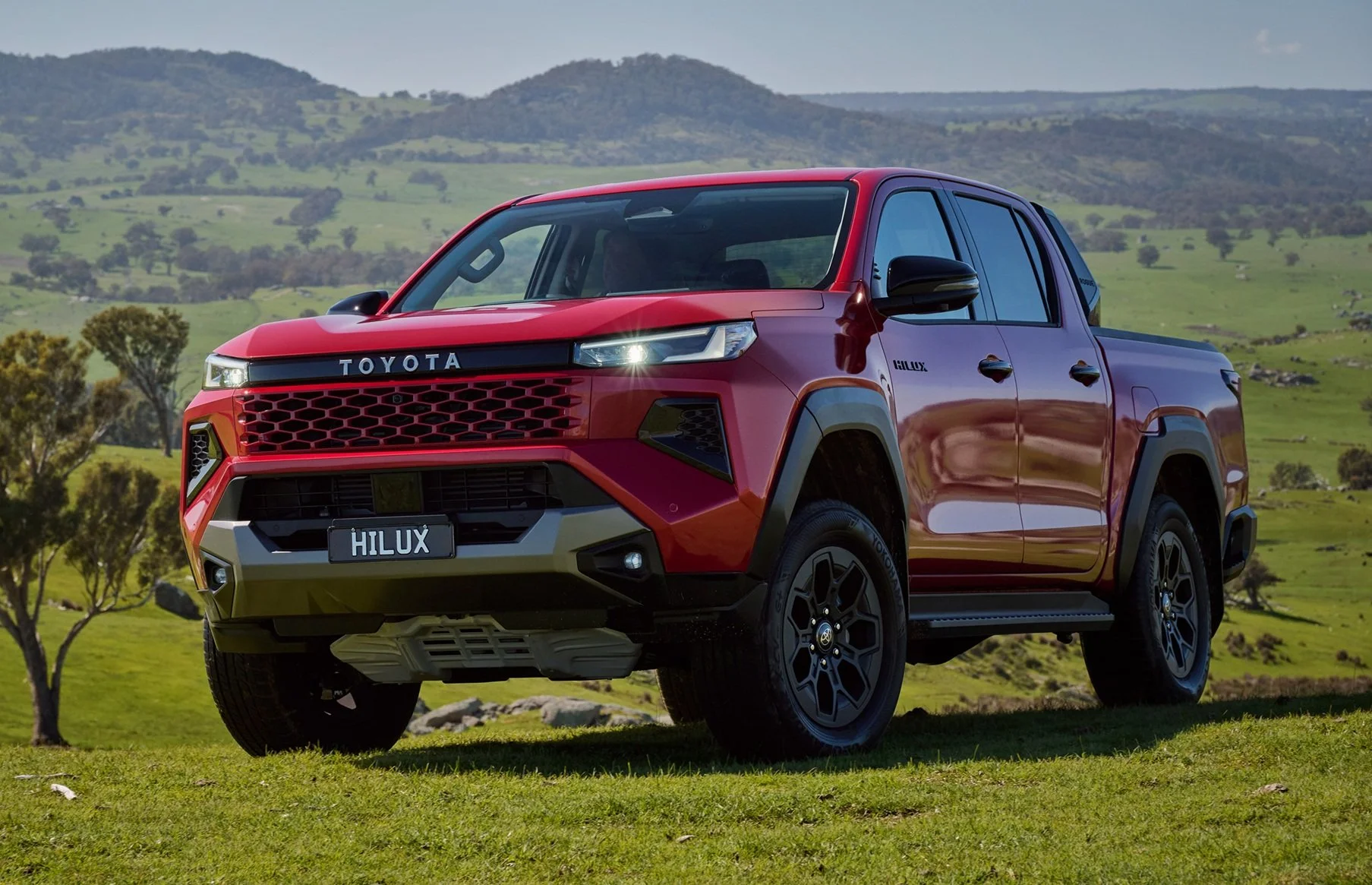







The 2026 Ranger Super Duty promises bigger towing, more payload, better off-road credentials and an even bigger price. But can Ford improve the ownership experience and general reliability?